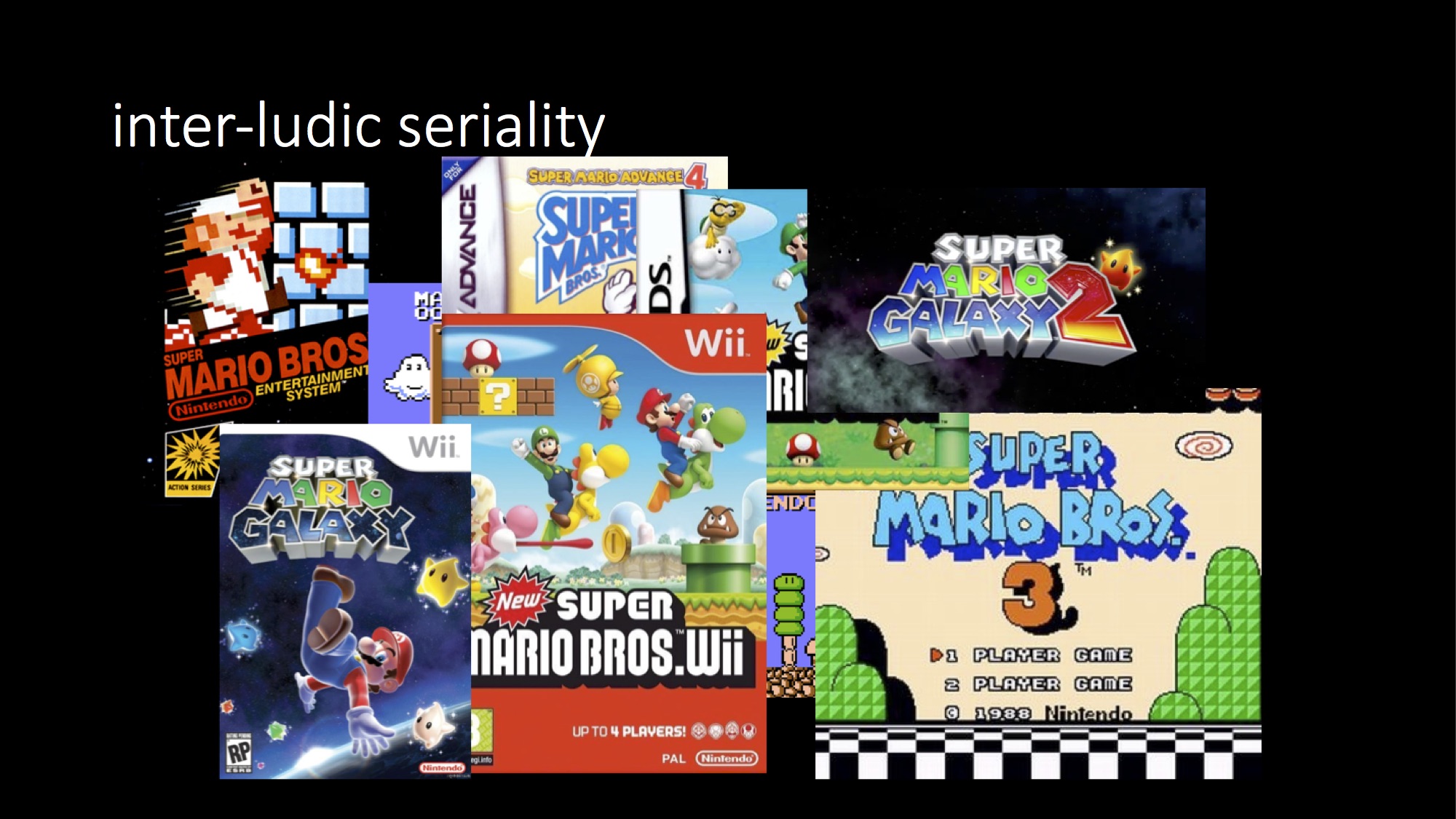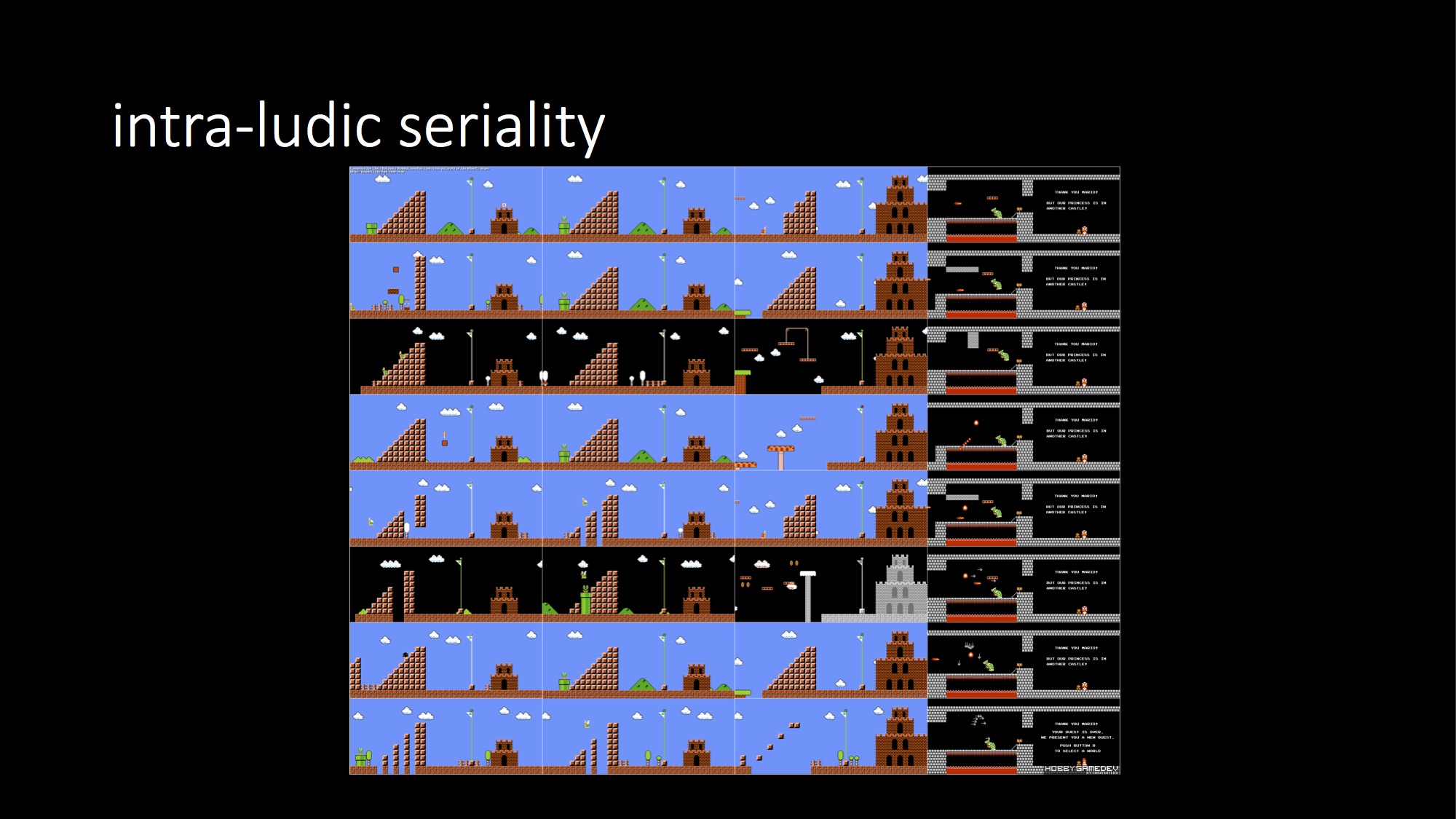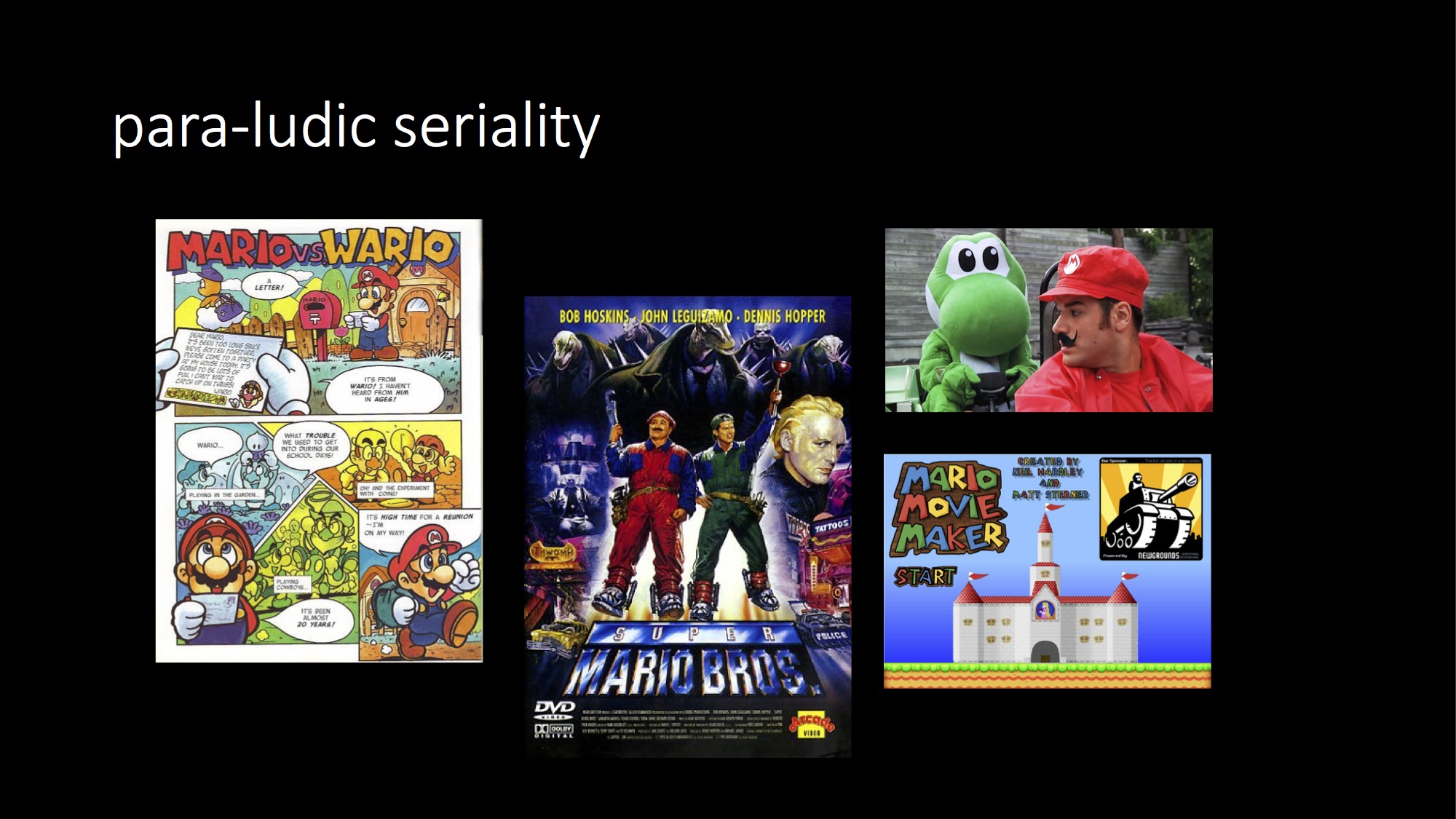Digital Seriality
Before elaborating on the encounter staged here between seriality studies and the digital humanities, allow me to say a bit more about the seriality of digital games and gaming communities in particular. I begin by outlining the multi-leveled framework that Andreas Jahn-Sudmann and I have elsewhere (Denson & Jahn-Sudmann 2013) called "digital seriality."

The starting point for investigating serial forms and processes in games and gaming communities is what we call "inter-ludic seriality" — that is, the serialization processes that take place between games, establishing series such as Super Mario Bros. 1, 2, 3 and so on. For the most part, such inter-ludic series are constituted by fairly standard, commercially motivated practices of serialization, expressed in sequels, spin-offs, and the like; accordingly, they are a familiar part of the popular culture that has developed under capitalist modernity since the time of industrialization. So, on this level at least, there is a great deal of overlap with pre-digital forms of seriality (as expressed in serialized novels, films, TV shows, etc.). But as we shall see, digital games also involve seriality across a variety of other levels.

"Intra-ludic seriality" refers to processes of repetition and variation that take place within games themselves, for example in the 8 "worlds" and 32 "levels" of Super Mario Bros. Here, a general framework is basically repeated while varying and in some cases increasingly difficult tasks and obstacles are introduced as Mario searches for the lost princess. Following cues from Umberto Eco (1985) and others, this formula of "repetition + variation" is taken here as the formal core of seriality; games can therefore be seen to involve an operational form of seriality that is in many ways more basic than, while often foundational to, the narrative serialization processes that they also display.
On the other hand, this low-level seriality is matched by higher-level processes that encompass but also go beyond the realm of narrative — beyond even the games themselves. "Para-ludic seriality" involves tie-ins and cross-overs with other media, including the increasingly dominant trend towards transmedia storytelling, aggressive merchandising, and the like. Clearly, this is part of an expanding commercial realm, but it is also the basis for a great deal more.

What I have in mind is a social superstructure, itself highly serialized, that forms around or atop these serialized media, as fans take to the Internet to discuss (and play) their favorite games. In itself, this type of series-based community-building is nothing new. In fact, it may just be a niche form of a much more general phenomenon that is characteristic for modernity at large. Benedict Anderson (1991, 1998) and Jean-Paul Sartre (1991 [1960]) before him have described modern forms of collectivity in terms of "seriality," and they have linked these formations to serialized media consumption and those media's serial forms (see also Boluk & Lemieux 2012, Denson & Mayer 2012). According to these thinkers, newspapers, novels, photography, and radio have effectively "serialized" community and identity throughout the nineteenth and twentieth centuries.
Interestingly, though, in the digital era, this high-level community-building seriality is sometimes folded into an ultra low-level, "infra-ludic" form of seriality — a level that is generally invisible and that takes place at the level of code. This enfolding of community into code, broadly speaking, is what motivates the enterprise of "critical code studies" (CCS), when it is defined by Mark Marino (2006) as
Basically, then, the questions that I am here pursuing, in the interest of staging an encounter between digital seriality and the digital humanities, are predicated upon another encounter as well. I am concerned, that is, with the possibilities of crossing critical code studies with digital humanities — CCS with DH — and with exploring the consequences and affordances for a critical investigation of digital game-based seriality. My goal in this undertaking is to find a means of correlating formations in the high-level social superstructure of gaming communities with the infra-ludic serialization at the level of code — not only through close readings of individual texts but by way of distant readings and other interactions with the large collections of data produced by online collectives. It is with this goal in mind that I turn now to my case study.an approach that applies critical hermeneutics to the interpretation of computer code, program architecture, and documentation within a socio-historical context. CCS holds that lines of code are not value-neutral and can be analyzed using the theoretical approaches applied to other semiotic systems in addition to particular interpretive methods developed particularly for the discussions of programs. Critical Code Studies follows the work of Critical Legal Studies, in that its practitioners apply critical theory to a functional document (legal document or computer program) to explicate meaning in excess of the document's functionality, critiquing more than merely aesthetics and efficiency. Meaning grows out of the functioning of the code but is not limited to the literal processes the code enacts. Through CCS, practitioners may critique the larger human and computer systems, from the level of the computer to the level of the society in which these code objects circulate and exert influence.